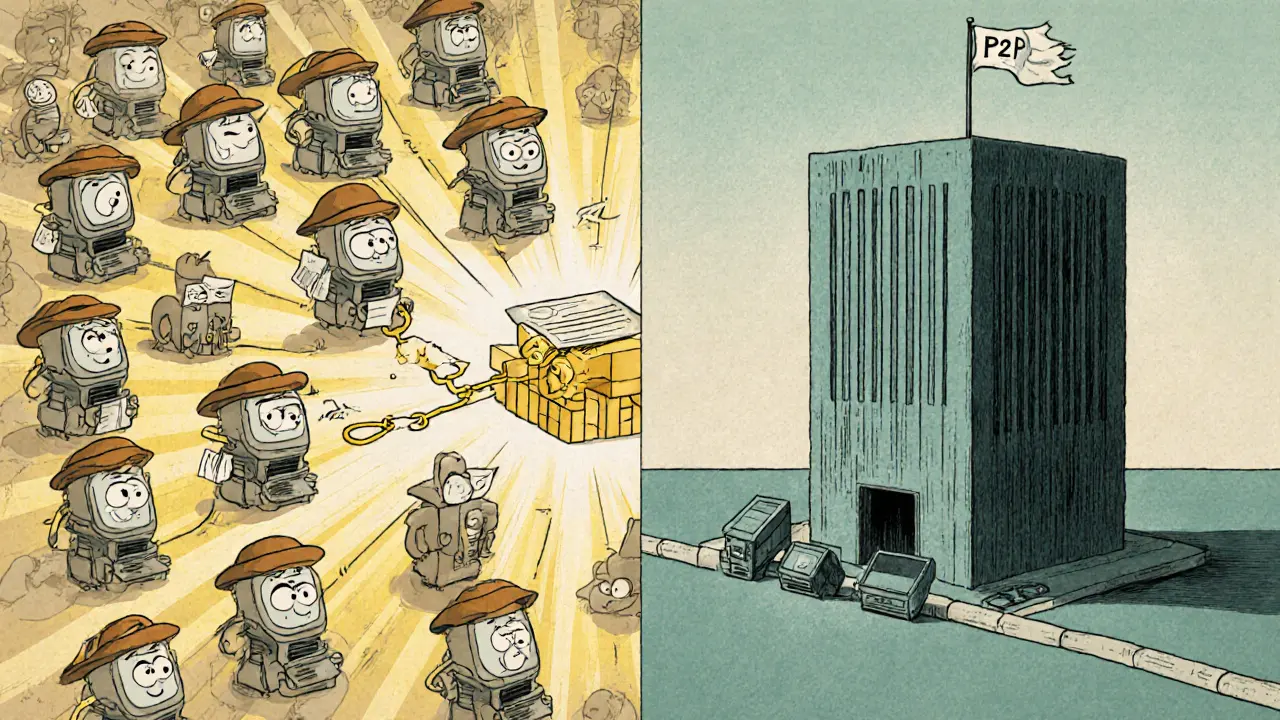Peer-to-Peer Network – The Core of Modern Crypto Ecosystems
When working with peer-to-peer network, a decentralized architecture where each node talks directly to others without a central server. Also known as P2P network, it enables trust‑less data exchange, resilient routing, and scalable resource sharing. This structure encompasses blockchain, a ledger that records transactions across a network of nodes, cross-chain bridge, a protocol that moves assets between separate blockchains using peer‑to‑peer messaging and smart contract, self‑executing code that runs on a distributed ledger. In short, a peer-to-peer network requires direct node communication to let these technologies work without a single point of failure.
Why the Peer-to-Peer Model Drives Crypto Innovation
The decentralization of a peer-to-peer network means anyone can join, validate, or relay data. That openness fuels the rise of decentralized finance (DeFi), where users earn yields, trade assets, or stake tokens without banks. Because each node stores a copy of the ledger, blockchain gains security and censorship resistance – two traits that airdrop projects and tokenomics experiments rely on heavily. Cross-chain bridges, for example, use peer‑to‑peer protocols to lock assets on one chain and mint wrapped versions on another, enabling liquidity pools to span Bitcoin, Ethereum, and Solana. Smart contracts sit on top of this mesh, automating everything from token distribution (see our airdrop guides) to complex loan calculations (covered in our DeFi risk posts). When you combine these pieces, the peer-to-peer network becomes the glue that holds the whole crypto universe together.
Below you’ll find a curated set of articles that dive into each of these components. We cover stablecoins that rely on decentralized oracles, deep dives into cross‑chain bridge mechanics, practical reviews of exchanges that run on peer‑to‑peer infrastructure, and step‑by‑step guides for claiming airdrops that use smart contracts. Whether you’re tracking staking rewards, assessing tokenomics, or just curious about how peer-to-peer communication keeps your crypto safe, the posts ahead give you actionable insights and real‑world examples.
P2P vs Client-Server: Why Blockchain Chooses Peer-to-Peer
by Johnathan DeCovic Sep 26 2025 8 CryptocurrencyExplore why blockchain relies on peer-to-peer networks over client-server models, covering decentralization, cost, security, and scalability.
READ MORE
